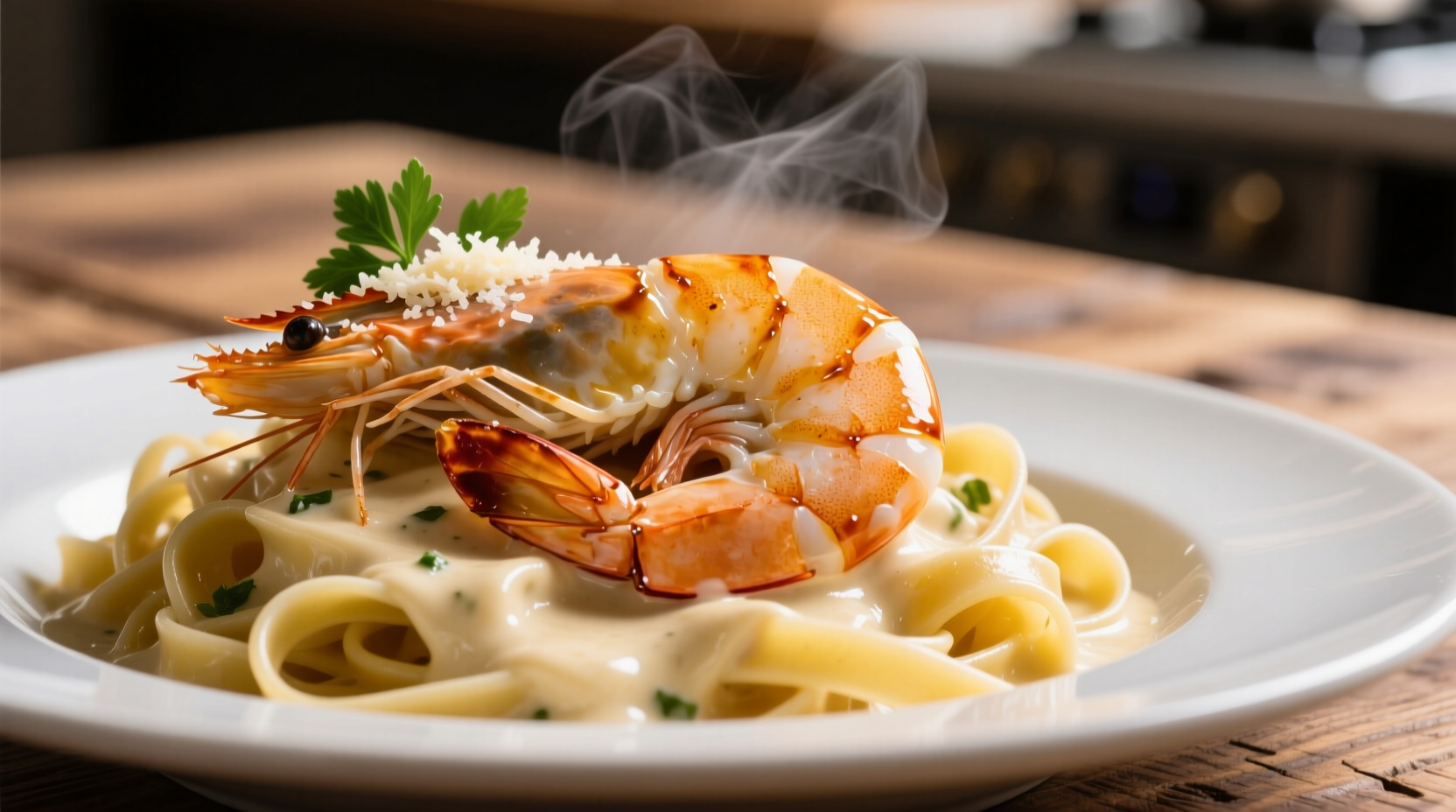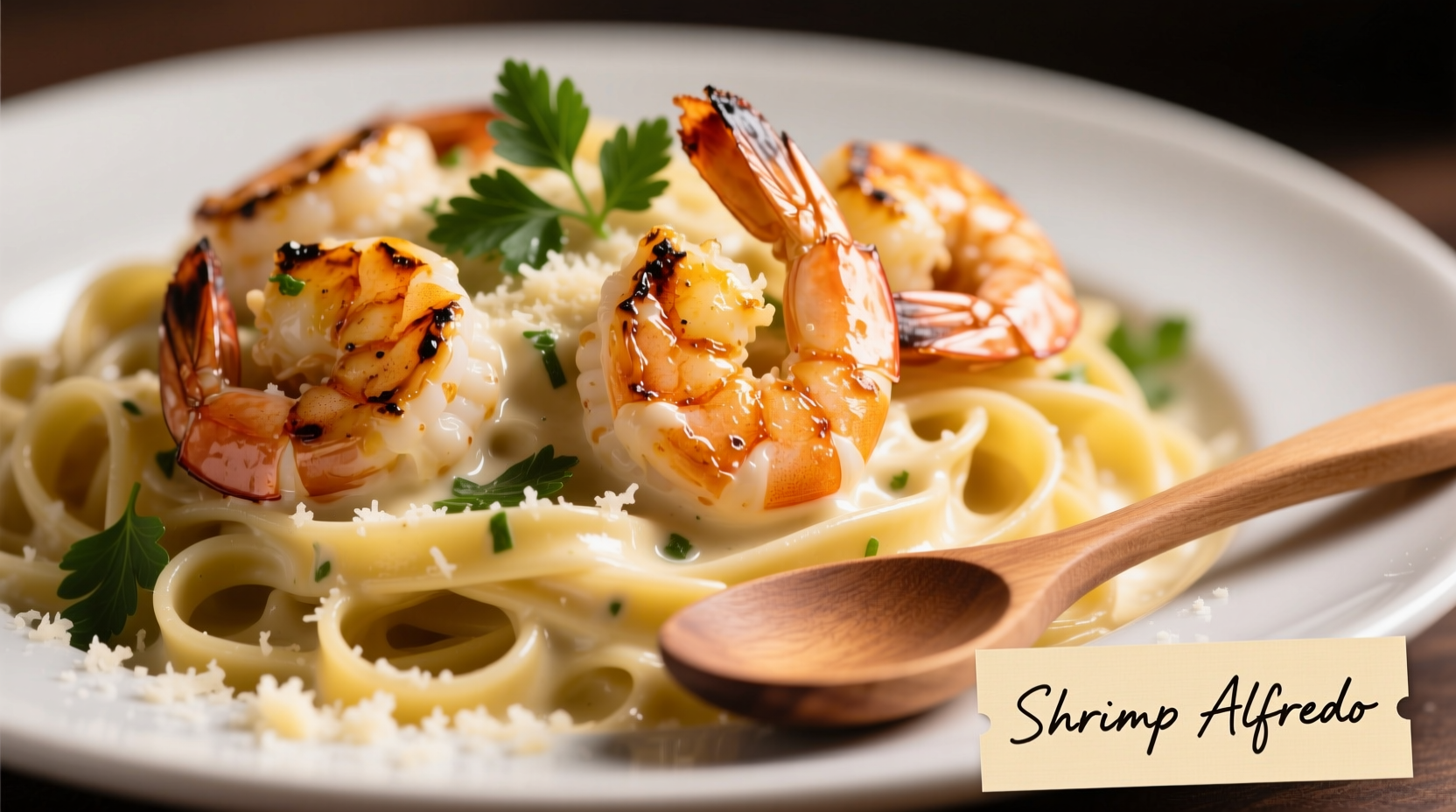Nothing ruins a creamy alfredo dish faster than rubbery, overcooked shrimp. As a professional chef with years of experience in Italian kitchens, I've seen countless home cooks make the same mistakes with this delicate protein. But getting perfect shrimp for alfredo doesn't require culinary school training—just precise timing and proper technique. In this guide, you'll learn exactly how to prepare shrimp that complements rather than competes with your rich alfredo sauce, with actionable steps you can implement tonight.
Selecting and Preparing Your Shrimp
Start with quality ingredients. For alfredo dishes, medium shrimp (36-40 count per pound) work best—they're substantial enough to stand up to the rich sauce without overwhelming it. If using frozen shrimp, thaw them overnight in the refrigerator rather than at room temperature to maintain texture integrity.
Proper preparation is critical:
- Peel and devein shrimp completely—residual shell fragments ruin the smooth texture of alfredo
- Rinse under cold water and pat thoroughly dry with paper towels
- Leave tails on for presentation or remove for easier eating
- Season lightly with salt and pepper just before cooking
Moisture is the enemy of proper searing. As Antonio Rodriguez, our culinary expert explains: "Shrimp release water when cooked. If they're not completely dry, you'll steam them instead of sautéing, resulting in rubbery texture that won't absorb the alfredo sauce properly."

Shrimp Cooking Timeline: The Critical Minutes
Timing is everything when cooking shrimp for alfredo. Unlike proteins that continue cooking off-heat, shrimp go from perfect to rubbery in under 30 seconds. This timeline shows the visual indicators you need:
| Time | Visual Indicator | Action |
|---|---|---|
| 0-30 seconds | Shrimp turn translucent pink at edges | Wait—don't flip yet |
| 1-1.5 minutes | Bottom half opaque, top half translucent | Flip shrimp |
| 1.5-2 minutes | Completely opaque with "C" shape | Remove from heat immediately |
| 2+ minutes | Tight "O" shape, rubbery texture | Overcooked—cannot be salvaged |
Perfect Cooking Technique for Alfredo Integration
Follow these steps for restaurant-quality results:
- Heat 1 tablespoon olive oil and 1 tablespoon butter in skillet over medium-high heat
- Add 1 minced garlic clove and sauté for 30 seconds until fragrant (don't brown)
- Arrange shrimp in single layer—never overcrowd the pan
- Cook undisturbed for 1-1.5 minutes until edges turn pink
- Flip and cook 30-60 seconds more until opaque throughout
- Remove shrimp immediately to prevent carryover cooking
- For extra flavor, deglaze pan with 2 tablespoons white wine, scraping browned bits
Integrating Shrimp with Alfredo Sauce
This is where most home cooks make critical errors. Never cook shrimp directly in alfredo sauce—that guarantees overcooking. Instead:
- Cook shrimp separately using the method above
- Prepare your alfredo sauce
- Remove sauce from heat
- Gently fold in cooked shrimp just before serving
- Let residual heat warm shrimp through without further cooking
The USDA Food Safety and Inspection Service confirms that shrimp reach safe internal temperature (145°F/63°C) when opaque, but emphasizes that carryover cooking continues after removal from heat. This explains why removing shrimp just before they appear fully cooked yields perfect results.
Troubleshooting Common Shrimp Problems
Rubbery texture: Almost always caused by overcooking. Shrimp should form a loose "C" shape when perfect; a tight "O" means they're ruined.
Watery sauce: Caused by adding wet shrimp to sauce. Always pat shrimp completely dry after cooking and before adding to alfredo.
Bland flavor: Shrimp need proper seasoning. Salt shrimp just before cooking—not during thawing—to prevent texture damage.
Pro Tips for Restaurant-Quality Results
- Use a fish spatula for delicate flipping
- Keep cooked shrimp warm in oven at 170°F (77°C) max—never on stove
- Add shrimp to sauce no more than 5 minutes before serving
- For extra richness, finish with 1 teaspoon lemon zest
- Never add shrimp to boiling sauce—always remove from heat first
Frequently Asked Questions
How long should I cook shrimp for alfredo sauce?
Cook medium shrimp for 1-2 minutes per side in a hot skillet. They're done when opaque throughout and form a loose "C" shape. Total cooking time should be 2-3 minutes maximum—any longer results in rubbery texture that won't absorb alfredo sauce properly.
Should I cook shrimp before adding to alfredo sauce?
Yes, always cook shrimp separately before adding to alfredo sauce. Cooking shrimp directly in the sauce guarantees overcooking. Prepare shrimp using the sauté method described, then gently fold into the sauce just before serving to maintain perfect texture.
What's the best size shrimp for alfredo?
Medium shrimp (36-40 count per pound) work best for alfredo. They're substantial enough to complement the rich sauce without overwhelming it. Avoid extra-large or jumbo shrimp as they require longer cooking that conflicts with alfredo's delicate timing.
Can I use frozen shrimp for alfredo?
Yes, but thaw frozen shrimp properly in the refrigerator overnight. Never cook frozen shrimp directly—they'll release too much water, making your alfredo sauce watery. Pat thawed shrimp completely dry before cooking for proper searing.
Why does my shrimp get rubbery in alfredo?
Shrimp become rubbery when overcooked. This commonly happens when added directly to hot alfredo sauce or left cooking too long. Shrimp continue cooking from residual heat after removal from the pan, so remove them just before they appear fully done. Always add pre-cooked shrimp to sauce that's been removed from heat.











 浙公网安备
33010002000092号
浙公网安备
33010002000092号 浙B2-20120091-4
浙B2-20120091-4